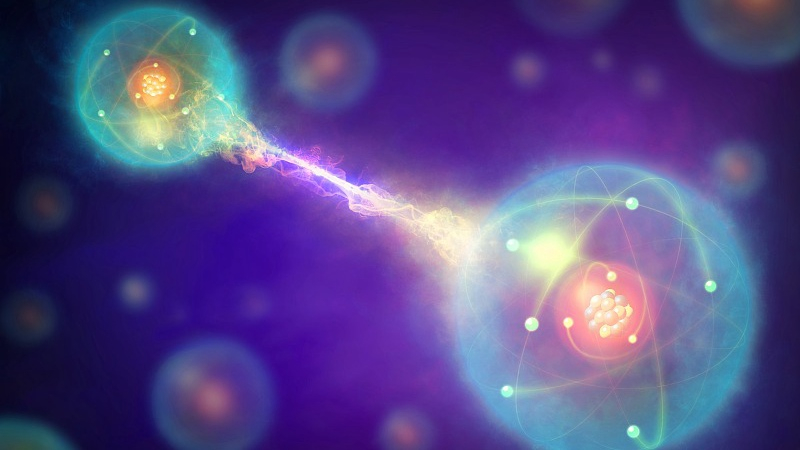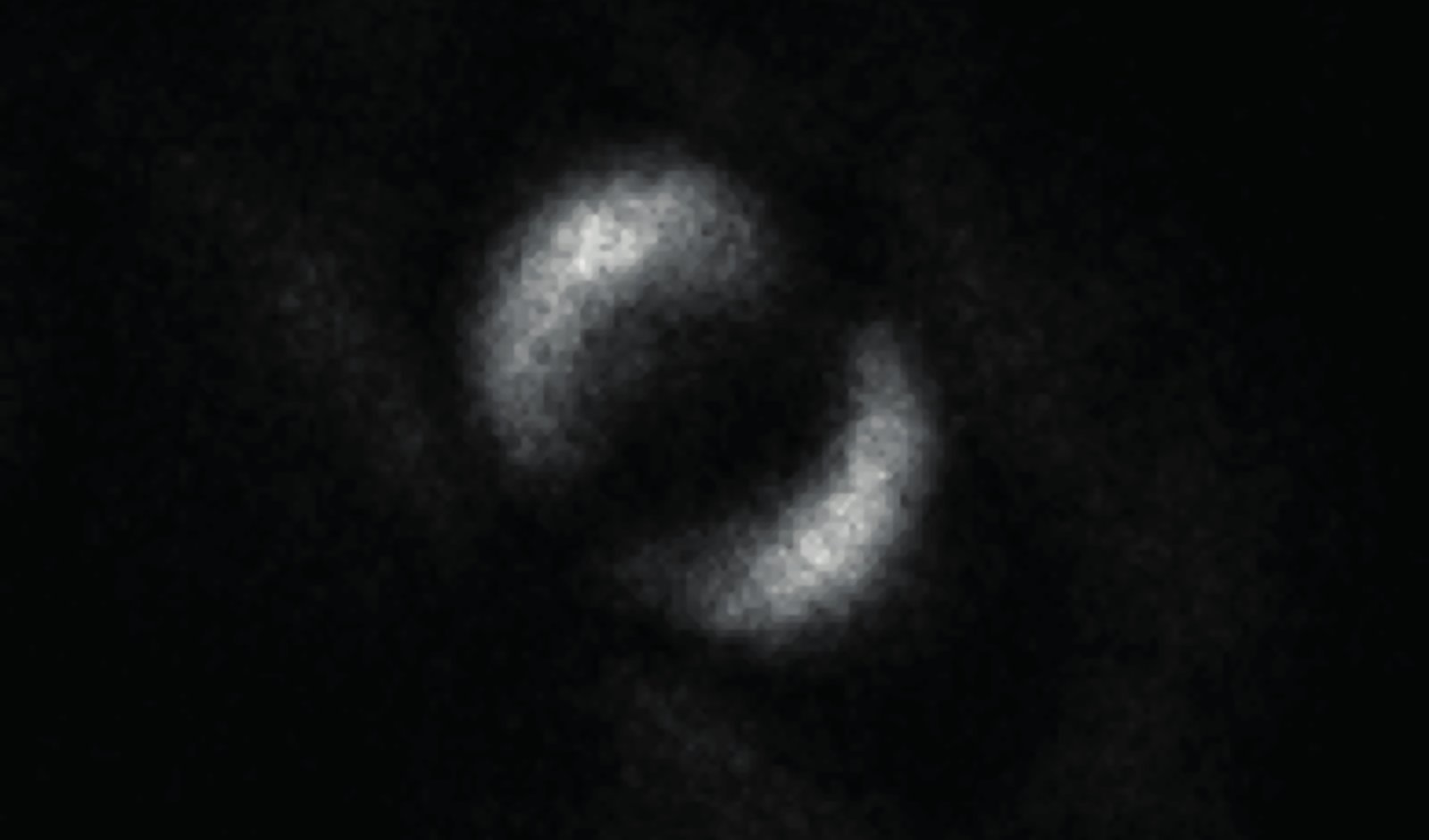

For the first time ever, physicists took a picture of the physical phenomenon "quantum entanglement," once described by Albert Einstein as "spooky action at a distance."
Though widely-used in practical applications such as quantum computing and cryptography, it has never been captured in a single image.
Scientists from the University of Glasgow managed to capture the image of the connection – known as Bell entanglement – via a special camera. Their research results were published in the journal of Scientific Advances on Friday.
The photo shows the brief moment when two photons interacted and shared a physical state.

The image of quantum entanglement. /Photo via University of Glasgow
To record the elusive moment, the scientists designed a system that emits a bundle of entangled photons from a quantum light source toward the so-called "non-conventional" objectives on liquid crystal materials, which can change the phase of the photons as they pass through.
They also set an ultra-sensitive camera capable of detecting individual photons, whose shooting speed reaches 40,000 frames per second.
When a photon was identified entangled with another, the camera automatically captured the image, showing the two seemingly reflecting off each other in a shape of ring.
Paul-Antoine Moreau, lead author of the paper and Glasgow physicist, described the image as "an elegant demonstration of a fundamental property of nature."
The visual evidence could lead to new research in fields such as quantum computing and new types of imaging, Moreau said.
What's 'quantum entanglement'?
Two interacting particles, such as two photons passing through a beam splitter, can be "entangled" in a very strange way, sharing their physical state instantaneously, no matter how far apart they are.
This connection is called "quantum entanglement", and is one of the fundamental phenomena in the field of quantum mechanics.

Copyright © 2018 CGTN. Beijing ICP prepared NO.16065310-3
Copyright © 2018 CGTN. Beijing ICP prepared NO.16065310-3